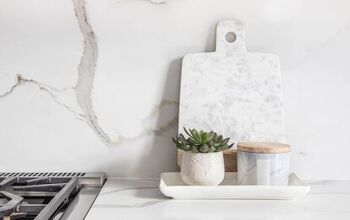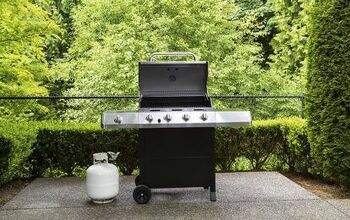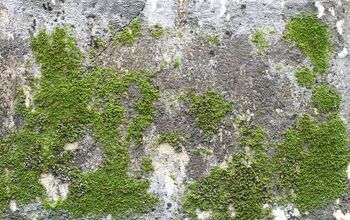How To Remove Urine Stains From A Toilet Seat (Quickly & Easily!)

Let’s face facts: a toilet is generally a pretty gross thing. Even when they are clean, they serve one purpose and it isn’t a pretty one. With a little bit of care and attention, your toilet at least will not gross you out.
From time to time, though, there is a likelihood that urine will stain your toilet seat. It happens to the best of us and is totally normal, but still requires cleaning all the same. With a little bit of vinegar, baking soda, and elbow grease, you can get the seat and bowl clean and up to your standards once again.
Do You Need a Maid Service?
Get free, zero-commitment quotes from pro contractors near you.

Urine on the Toilet Seat?
This is typically a problem for men and families with young boys. Try as we might, men just miss the bowl sometimes. It happens to the best of us and there likely is not one of us out there that hasn’t peed on the bowl rim or seat before.
The key to keeping your bowl rim and toilet seat clean is to just keep on top of it. If you notice that you missed a little bit, wipe up the mess before flushing. Your toilet will still require a deeper cleaning later on, but at least you won’t have to see those yellowish stains staring at you the next time you head into the bathroom.
Why Keep the Toilet Seat Clean?
This one probably shouldn’t require explaining. When your toilet seat – or any other areas of the toilet, for that matter – are gross, most normal people would not want to use it. If you have guests over, no one is going to want to use a stained toilet seat.
On top of that, there are potential health issues from letting your toilet seat remain dirty. Bacteria that is allowed to build up can lead to things like Streptococcus, Shigella Bacteria, or even E Coli. Your very health can depend on how clean your toilet seat is, so make sure that you keep up with it.
How to Remove Urine Stains from a Toilet Seat
No matter how the stains got there, they make for an unsightly mess. Thankfully, the process of removing them is simple and straightforward. Within about an hour, you can leave your toilet looking spotless once again.
Step 1: Create Your Mixture
To get the job done, you will need baking soda and white vinegar. If you do not have these two items in your home already, run out and get them. They are versatile household cleaners and can be used for a litany of tasks.
Mix in a quarter-cup of baking soda with a quarter-cup of white vinegar. Mix it together in a bowl to accommodate for the foamy, paste-like texture that will result. These two ingredients foam when they are combined, so don’t worry when the reaction happens. It is completely safe and normal.
Step 2: Get to Scrubbing
Ideally, you should have a small scrub brush or an old toothbrush at your disposal here. Dip your brush into your baking soda and vinegar paste, scrubbing the stained area of the toilet seat or bowl rim. Depending on how long the stains have been sitting, it may take a little elbow grease to do the job.
Constantly rinse out the brush with water, grabbing more paste to scrub onto the surface of the seat or bowl rim. Make sure that you coat the area with the paste and give it about 10 minutes to set so that it can break the stain down.
The vinegar and baking soda combo act as a natural scouring cleanser. Scouring cleansers are great for not only removing surface stains but deodorizing the surface, too. We all know what that smell can be like, so eliminating it is of the utmost importance.
Step 3: Wipe Away the Mess
Take a clean rag or wiping cloth and soak it with water. Make sure to ring the rag out thoroughly before moving on. Use the cloth or rag to wipe up the baking soda and vinegar paste that you have spread over the toilet seat.
It may take a few passes to get all of the paste up. Check to ensure that the stains have been removed; you may have to repeat the previous step to get up truly stubborn stains. Take a dry cloth and go over the seat to ensure that everything has been properly dried.
Step 4: Pet Odor Neutralizer
This makes sense, so keep reading. Remember that smell? No one wants to have to contend with that smell. Grab some pet odor neutralizer and cover the stained area if you feel like any additional deodorizing is required.
Though it may sound confusing, pet odor neutralizer has enzymes in it that work to not only absorb but break down that odor-causing bacteria that urine has. Let the neutralizer sit for about 20 minutes before rinsing it away with some water.
Alternative Method: Use Bleach
The reason that so many opt for the baking soda and vinegar combination is that it is organic and safe to use. There are no chemicals within that may be dangerous to breathe in, although you probably want to avoid breathing in vinegar deeply due to the pungent smell.
Still, if you are looking for an effective means of getting out tough stains, you can’t go wrong with bleach. Just make sure that you wear proper safety protection and have good ventilation. Bleach is dangerous to breathe in, so use caution if you go this route.
Step 1: Implementing the Bleach
Start out by pouring about a quarter cup of bleach into a measuring cup. Gently and carefully pour the bleach over the impacted areas. If you have a particularly dirty toilet bowl, bleach is a great way to get that clean as well.
Make sure that you wipe up any spills with a towel or rage. Bleach on other surfaces can not only be potentially harmful, but can leave fumes in the air that you wind up breathing in. Avoid that where you can.
Step 2: Remove the Toilet Seat
Pouring the bleach over the seat and bowl rim may work just fine depending on the severity of the stains. If you need something a little more comprehensive, fill a bucket up with a few gallons of water and mix in about a third of bleach to form a cleaning solution.
Remove the toilet seat and gently dip it into your new cleaning solution. Give the seat a chance to soak for about 10-15 minutes to break down the truly egregious and tough stains. With a small brush, you should then scrub the impacted area. Keep going until the stains begin to fade.
Step 3: Rinse and Dry
You may have to repeat the previous step again if the stains have not completely faded, so be patient. Eventually, the bleach should be able to bring up even the toughest of stains. It just takes a little bit of time.
When the stains are finally cleaned, rinse it off. You can either pour water directly over it or wipe it down with a wet rag or cloth. Towel-dry both the seat and the surrounding area, ensuring that the area is totally dry. Finally, reinstall the toilet seat and you should be staring at a sparkling toilet once again.
Plastic Seats Present a Different Challenge
It is important to remember that not all toilet seats are the same. There are a variety of different materials out there and each of them has its own unique benefits. They also have different methods of cleaning that work better than the others.
Plastic seats, for instance, are generally not stain-proof. Without adequate cleaning, it is more than possible to ruin the toilet seat and have to throw it out entirely. There is something important to keep in mind, too. If you use heavy-duty cleaners and major scrubbing effort, you run the risk of scratching the seat up and taking away its shine.
When scrubbing your toilet seat, use a bit of care. Getting too aggressive can lead to the aforementioned scratches and even some grooves in more extreme cases. The grooves are not only unsightly but are a great place for bacteria to hide out.
Do You Need a Maid Service?
Get free, zero-commitment quotes from pro contractors near you.

Wooden Toilet Seats are Even Tougher
While plastic has its issues during the cleaning process, wooden toilet seats present even further challenge. They tend to be stronger and may even last longer than their plastic counterparts, but not without major downsides.
For starters, you can’t clean wooden toilet seats with strong chemical cleaners. The chemicals can damage the finish of the wood and even soak into the seat itself since wood is a more porous material than plastic.
If you can find a wooden seat with a cover, that is the best way to go. This way, you can properly clean your toilet seat when a mess arises or simply throw the cover out. Those are far cheaper to replace than your toilet seat, as wooden toilet seats can get fairly pricey all things considered.
Related Guide

Ryan Womeldorf has more than a decade of experience writing. He loves to blog about construction, plumbing, and other home topics. Ryan also loves hockey and a lifelong Buffalo sports fan.
More by Ryan Womeldorf



























